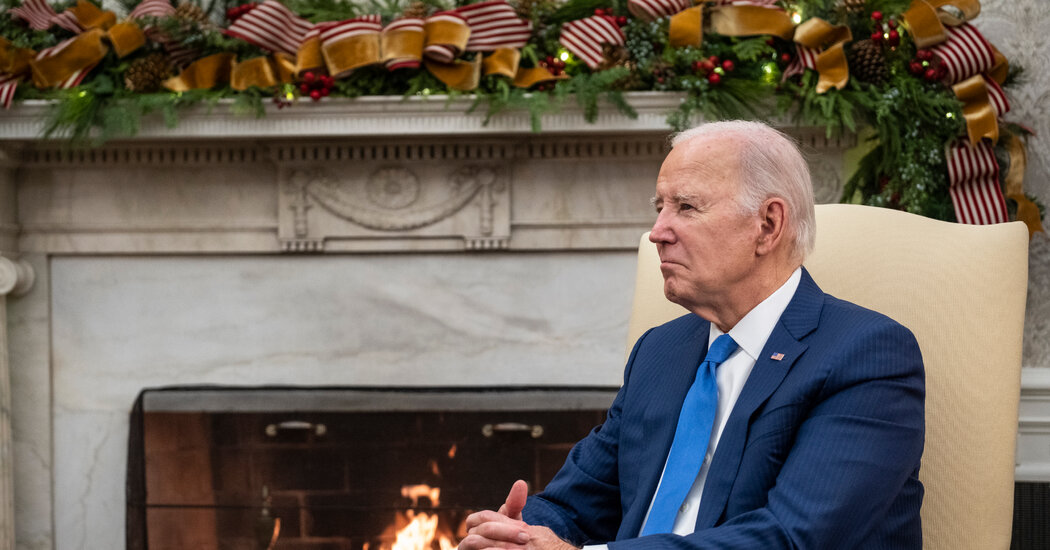The Jan. 6 Capitol Riot Investigation by the Numbers, Three Years Later
Nearly three years after a mob attacked the Capitol on Jan. 6, 2021, in support of former President Donald J. Trump, the criminal investigation into the events of that day pushes on.
Prosecutors have called the riot inquiry the largest in the history of the Justice Department, and there is no doubt it is vast by any measure.
Every week, a few more people are arrested.
As of December, about 1,240 people had been arrested in connection with the attack, accused of crimes ranging from trespassing, a misdemeanor, to seditious conspiracy, a felony.
More than 350 cases are still pending.
Around 170 people have been convicted at trial, while only two people have been fully acquitted. Approximately 710 people have pleaded guilty …
… and among those, around 210 pleaded guilty to felony offenses.
After being convicted or pleading guilty, more than 720 people have received sentences so far …
… and more than 450 of them were sentenced to periods of incarceration, ranging from a handful of days to more than 20 years.
And while there have been about 1,240 arrests as of early December …
… that may be only half of the total indictments that will ultimately be filed.
While some of the cases have attracted nationwide attention, particularly those involving far-right groups like the Proud Boys and the Oath Keepers militia, most of the prosecutions have flown beneath the radar, unfolding in quiet hearings often attended only by the defendants and their families. These proceedings have helped to flesh out the story of how an angry crowd of Mr. Trump’s supporters, egged on by his lies about a stolen election, stopped the democratic process, if only for several hours.
The bulk of the riot cases, more than 710, were resolved without trial through guilty pleas. As of the Justice Department’s latest update in December, about 170 people have gone to trial in Federal District Court in Washington, in front of either a jury or just a judge, with a vast majority resulting in convictions.
As for punishment, more than 450 people have been sent to jail or prison, with the longest term so far being the 22-year sentence imposed on Enrique Tarrio, the former leader of the Proud Boys. Several people who were not associated with extremist groups but who assaulted the police in what officers have described as a “medieval” battle outside the Capitol have been sentenced to a decade or more behind bars.
The mob that surrounded and ultimately stormed into the building was heterogeneous. There were men and women, husbands and wives, fathers and sons, and people of various races. There were carpenters, military veterans, schoolteachers, lawyers, real estate agents, even a former State Department official.
And while the roiling events of Jan. 6 are often lumped together as the attack on the Capitol, the truth is that more than one thing happened that day. Some of the defendants planned their roles in the assault for weeks, communicating with compatriots and showing up with weapons and protective gear. Others erupted in the moment, assaulting officers with their bare fists. Still others were swept up in the flow of the crowd and did little more than walk into — and then out of — the Capitol.
One of the most common charges used against rioters has been entering or remaining in a restricted federal building or grounds. More than 1,100 have faced that count.
About 450 people have been charged with assaulting or impeding law enforcement officers at the Capitol, and about 330 have been accused of obstruction of the certification of the election that was taking place inside the building on Jan. 6. But the Supreme Court recently announced that it was going to review the obstruction charge to see if it should apply to the Capitol attack.
The Justice Department has been forced to confront this array of behavior and tailor its charges to the details of each individual’s actions. Over and over, prosecutors have had to make challenging decisions: Should a person who was aggressive at the Capitol be accused of assault or of a lesser crime called civil disorder? Should someone who entered the building be charged with trespassing or merely illegal parading in the Capitol?
It has not been an easy or a perfect process, and almost three years after the riot, and well over 700 jail and probation sentences into the investigation, it is most likely nowhere near finished.


